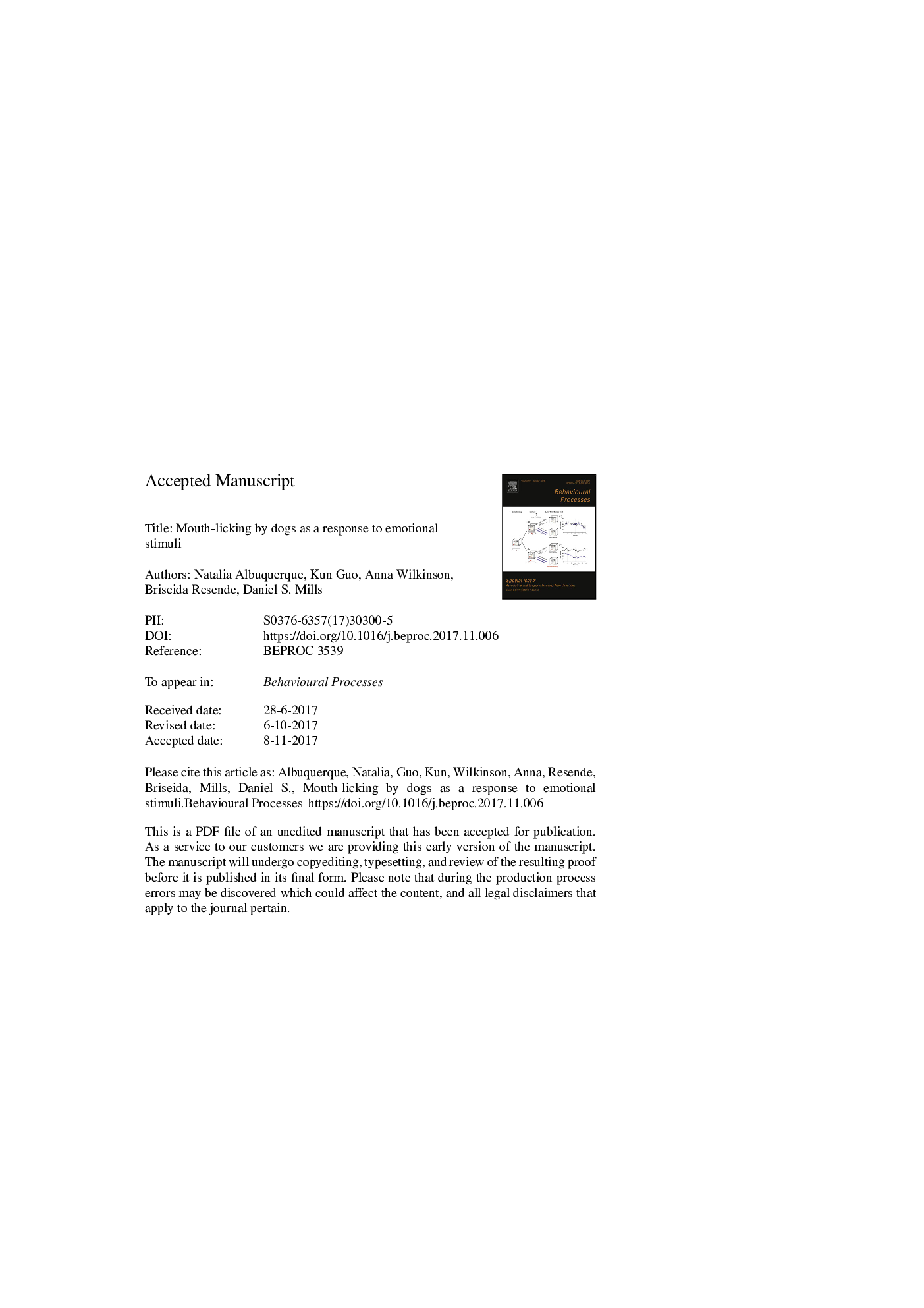| Article ID | Journal | Published Year | Pages | File Type |
|---|---|---|---|---|
| 8497030 | Behavioural Processes | 2018 | 19 Pages |
Abstract
Dogs are able to perceptually discriminate emotional displays of conspecifics and heterospecifics and possess the cognitive prototypes for emotional categorisation, however, it remains unclear whether dogs can respond appropriately to this information. One way to assess associations between specific behaviours and the perception of emotionally competent stimuli is to look at other reliable measures that are related to cognitive and physiological processing. Using a cross-modal preferential looking paradigm (Albuquerque et al., 2016), we presented dogs with pairs of facial expressions (positive and negative) combined with an emotionally charged vocalisation (positive or negative) or a control sound (neutral) and coded their mouth-licking behaviour. We found an effect of the valence of the face image dogs were seeing on the onset of the mouth-licking, with higher frequencies of this behaviour in response to the negative faces compared to images with positive valence. However, neither the sound being played nor the interaction between image valence and sound affected the behaviour. We also found an effect of species with mouth-licking occurring more often towards human stimuli. This spontaneous differential behavioural response, combined with previous evidence of cognitive emotional processing in these animals, suggests that dogs may have a functional understanding of emotional expressions.
Related Topics
Life Sciences
Agricultural and Biological Sciences
Animal Science and Zoology
Authors
Natalia Albuquerque, Kun Guo, Anna Wilkinson, Briseida Resende, Daniel S. Mills,
